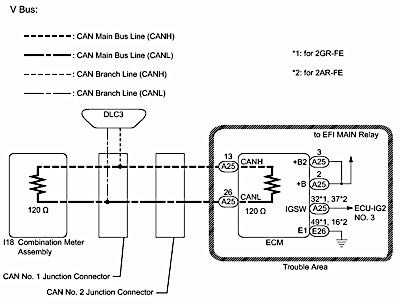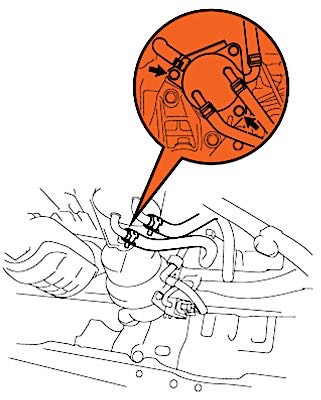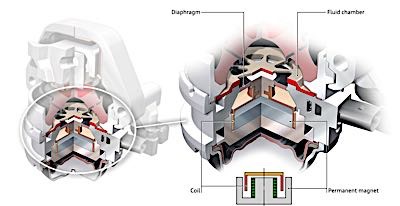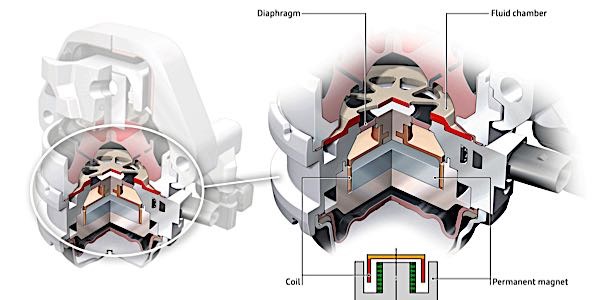Engines have noticeably changed in the past decade. Fewer cylinders, more power at lower RPM and more vibrations able to be detected at idle are just a few of the differences of today’s engines.

With these changes, it should be no surprise that engine and transmission mounts have taken on new importance. New technologies are being used that access information from the engine to anticipate vibration before it reaches the driver.
The primary mission of the motor mount is keeping the engine and transmission in place as they propel the vehicle. However, the forces and elements that degrade mounts are more active than ever.
For many years, automakers relied on solid rubber motor mounts to support the engine. The natural flexibility of rubber allows the mounts to absorb vibration. However, if the rubber is too compliant, the engine may experience excessive motion under load that could stress and crack exhaust pipes and connections. With such tight clearances under the hood, there’s a risk of something rubbing against something else and causing additional noise or other problems. So, the rubber in the mounts has to be relatively stiff so the engine does not rock excessively when it is under load.
Engine vibration is usually most noticeable when the engine is idling, especially if the engine has an odd fire configuration as some V6 engines do. Four-cylinder engines, as well as diesels, can also produce a lot of vibration at idle. Vibrations can be amplified even more when high-load, belt-driven accessories, such as the A/C compressor, are engaged while the engine is idling.
Hydromounts
A little more than 30 years ago, automakers came up with a solution for reducing NVH — the glycol-filled “hydromount.” Replacing solid rubber motor mounts with ones made of hollow rubber filled with fluid allowed the mounts to absorb more vibration without allowing excessive engine motion. This was a totally passive design that did not require any other modifications.
Hydromounts began appearing on various vehicles in the 1980s, and by the 1990s they were common on many domestic and import vehicles. The mounts were more expensive to manufacture (and replace) than solid mounts, and over time they tended to crack and lose their fluid. A hydromount that has lost its fluid is somewhat like a jelly-filled donut that has lost its filling. It goes flat and can no longer provide the same degree of NVH dampening as it once did. When this happens, the mount needs to be replaced.
Obviously, the only way to restore the same level of NVH control is to replace bad hydromounts that have lost their fluid with new hydromounts.
Active Mounts
It was inevitable that sooner or later, dumb motor mounts would get smart. A “tunable” motor mount that can change its dampening characteristics has a significant NVH advantage over a passive hydromount or a solid mount. Such a mount can be relatively soft at idle to absorb the unwanted shakes produced by wide or unevenly spaced cylinder firings, then stiffen up at higher engine speeds and loads to limit unwanted engine motions. It’s the best of both worlds, but it does require some type of external controls and inputs. These mounts are found on a number of late-model vehicles both foreign and domestic.
On 2005-’15 Toyota Camry V6 models, for example, a vacuum-actuated Active Control Engine Mount (ACM) system is used to reduce NVH. The front engine mount has a hollow chamber inside that allows the stiffness of the mount to change when vacuum is applied. A duty cycle vacuum switching valve (VSV) on the outside of the mount is controlled by the powertrain control module.
When the engine is idling, the PCM completes the ground circuit to the VSV solenoid, allowing intake vacuum to be applied to the mount. This makes the mount more compliant and allows it to absorb more vibration and shake. At higher engine speeds, the PCM reduces the frequency of the pulse signal to the VSV to gradually increase the stiffness of the mount to match engine speed.
On the Toyota application (which is similar to the active mount systems that Honda and Hyundai use), power to the VSV control valve is routed through the fuel injection relay. Vacuum is routed to the active mount through a pair of hoses connected to the engine’s vacuum reservoir.
On this system, a noticeable increase in NVH can occur if the active mount leaks vacuum, if the hose connections leak vacuum (or are obstructed), or if there is a problem with the VSV control valve, wiring harness or PCM.
The motor mount can be diagnosed with a handheld vacuum pump to see if it holds vacuum or not. If it leaks, it needs to be replaced. You can also use the vacuum pump gauge or your finger to see if vacuum is reaching the VSV control valve when the engine is idling. No vacuum or weak vacuum would tell you there’s a leak in the plumbing somewhere.
If the VSV control valve is not passing vacuum when it should, or not blocking vacuum when it should, the unit is defective and needs to be replaced.
You can also check the VSV control valve’s resistance with an ohmmeter. The Toyota spec says it should be 19 to 21 ohms at room temperature across its terminals. If resistance is outside of spec, replace the valve.
If the VSV control valve is functioning normally when tested, and resistance is within spec but does not seem to be working when everything is connected on the vehicle, the fault is in the wiring harness, engine compartment junction block or PCM. Check the harness for shorts, opens or grounds. The voltage supplied to the VSV control valve should be normal battery voltage.
Vibration-Canceling Technology
Lexus and Audi use a more sophisticated setup to reduce NVH. On these applications, “counter-vibration” is created within the active motor mount to help cancel engine vibrations. It’s sort of like noise-cancellation headphone technology, but instead of sound waves used to reduce noise, the system reduces the amplitude of engine vibrations via its active motor mount that generates its own counter vibrations.
Inputs from an acceleration sensor attached to the front motor monitor the amount of engine shake. The control unit then energizes the actuator inside the active mount to generate a counter shake that reduces the intensity of the vibration. The result is reduced engine vibration inside the vehicle when the engine is idling or when the A/C clutch is engaged. 
The control unit also looks at other data inputs via the Controller Area Network (CAN) communications bus. These include engine load ratio, engine coolant temperature, transmission gear position, vehicle speed and even outside air temperature.
If a malfunction occurs in an active motor mount system, the control unit will set a fault code and temporarily deactivate the system. The driver may notice an increase in NVH at idle.
Magneto Rheological Mounts
Like magneto rheological (MR) shock absorbers on Corvettes, Delphi has applied the same idea to their next generation of active motor mounts. MR fluids contain small particles of iron suspended in liquid. When an electric current or magnetic field is applied to the fluid, the iron particles line up and effectively increase the viscosity of the fluid.
In a shock absorber, this has the effect of increasing resistance and stiffening the dampening action of the shock for a firmer ride. The same approach also works in motor mounts. The first such application for the new MR mounts was the 2010-’15 Porsche 911 GT3 supercar (doubt you’ll see many of those in your shop).
The stiffness of the MR motor mounts can be adjusted in real time to match the dampening requirements of the engine as speed and load change. The system requires a microprocessor and data inputs that are already available to the powertrain control module. It also uses a fluid pressure sensor within the active mounts to provide feedback so the controller can compensate for changes as they occur.














